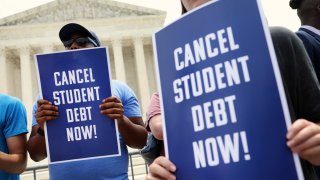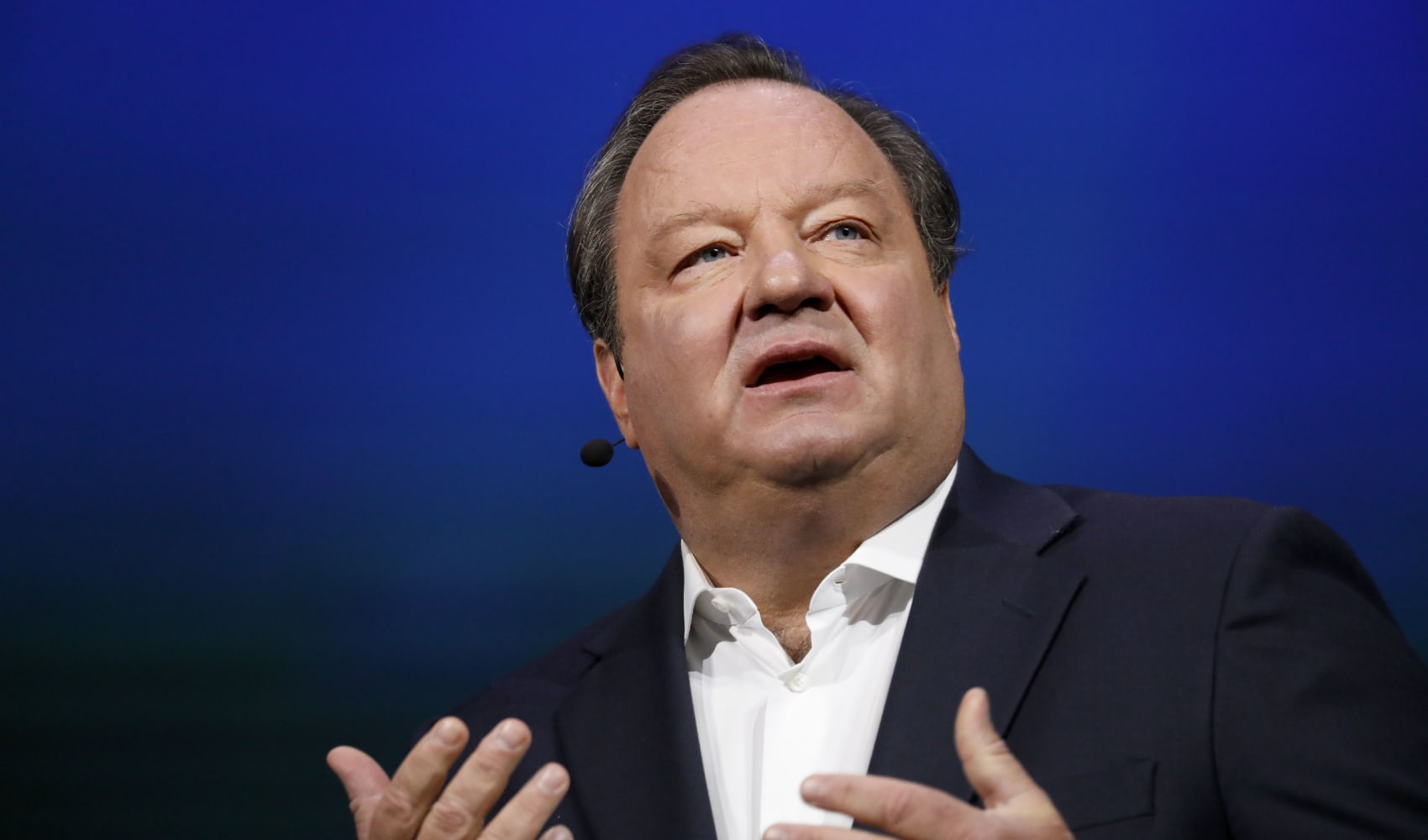
Whether it has been a good or bad year for student loan borrowers depends on who you ask.
While a large number of borrowers got life-changing emails this year saying their loans had been forgiven, plenty of others received bills in October that they would, in fact, be expected to pay.
Regardless, there has been a lot of student loan news to keep track of this year. Here’s a quick recap of the biggest student debt stories, plus updates to look out for in 2024.
Supreme Court strikes down forgiveness
Get Tri-state area news and weather forecasts to your inbox. Sign up for NBC New York newsletters.
Many federal student loan borrowers entered 2023 hopeful to see President Joe Biden’s campaign promise to forgive student debt come to fruition. That hope was dashed on June 30, when the Supreme Court voted in a 6-3 decision to block Biden’s plan to forgive up to $20,000 per borrower earning less than $125,000 a year.
Some were skeptical the plan was ever going to work, but when borrowers were notified late in 2022 that their applications for the forgiveness plan were approved, it felt like a real possibility.
But the highest court ruled that the Biden administration didn’t have the authority to cancel the debts, and the program was barred from proceeding.
Money Report
Debt forgiveness plan B moves forward
Immediately after the Supreme Court ruling on debt forgiveness came down, President Biden announced he would be pursuing debt forgiveness under the Higher Education Act, which would require a process known as negotiated rulemaking.
In this process, the public has the opportunity to submit topics for consideration, then a committee of stakeholders comes together to propose a rule. The general public then has another chance to comment or suggest changes before the new rule goes into effect.
It’s a lengthy process, but the first phase wrapped up earlier this month. A group of negotiators made up of legal experts, student loan borrowers, advocates and more met with the Department of Education for six sessions from October through December to draft proposed legislation that would provide debt relief to student loan borrowers.
The proposal outlines relief for four groups of borrowers, on which the committee had to reach a consensus. The group was unable to reach an agreement on a provision for those experiencing hardship but included avenues to address borrowers who have been in repayment for decades, those who owe more than they borrowed and more.
SAVE Plan launches
This summer, the Biden administration officially launched the Saving on a Valuable Education income-driven repayment plan. The plan replaced the Revised Pay As You Earn IDR and aims to make repayment more affordable for federal borrowers.
Under the plan, any individual borrower who earns $15 an hour or less can qualify for a $0 monthly payment. As of November, nearly 5.5 million borrowers had enrolled in the SAVE plan since the application opened, according to the Biden administration.
Biden brings total number of borrowers getting their loans forgiven to 3.6 million
Even without a sweeping debt relief program, 3.6 million borrowers received debt forgiveness under the Biden administration, as of December.
The borrowers earned relief under existing programs such as income-driven repayment and Public Service Loan Forgiveness. Both programs were notoriously cumbersome before the administration implemented systemic fixes to issues such as miscounted payments. However, much of this relief came to borrowers who should have gotten it years ago.
In total, the administration has forgiven $132 billion in loans for borrowers owed relief from PSLF or IDR, as well as disability discharges and fraudulent or since-closed schools.
The pandemic forbearance on federal loans ends
After more than one “final” extension, President Biden was compelled to end the forbearance on federal student loan payments and interest as part of a budget deal to avoid a government shutdown in June.
The budget bill gave the forbearance an official expiration date of Aug. 30. Interest resumed accruing on federal loans in September and payments came due in October for about 22 million borrowers.
It wasn’t exactly smooth sailing from there, though. Borrowers reported widespread servicer issues when payments came due, including receiving inaccurate bills and not being able to get through to customer service. Some borrowers had their loans continue in forbearance while servicers corrected information.
About 60% of borrowers who had payments due — not including those with administrative forbearances — in October had made their payment by mid-November, the Department of Education recently reported.
Student loan updates coming in 2024
As borrowers get used to repayments again and newer borrowers enter repayment for the first time, there is good news to look forward to in 2024. Here’s what to watch out for.
Employer student loan payment matching
In 2024, your employer may offer a new benefit that can help you pay off your student debt while also saving for retirement.
As a provision under 2022’s Secure 2.0 Act, employers will be allowed to match employees' student loan payments with a contribution to their workplace retirement account. Eligible accounts include 401(k)s, 403(b)s, 457(b)s and SIMPLE IRAs.
SAVE Plan payments get even lower
Currently, your monthly payment on the SAVE IDR plan is set at 10% of your discretionary income, which is the amount of money you earn over 225% of the federal poverty line. In the summer of 2024, that payment calculation will drop to 5% of discretionary income for undergraduate borrowers.
Borrowers with graduate loans will pay a weighted average between 5% and 10% of their discretionary income, depending on their starting balance, according to Federal Student Aid.
Quicker path to forgiveness for small initial balances
Other provisions of the SAVE Plan will also go into effect in 2024, including expedited forgiveness for borrowers with small initial balances. Those who borrowed $12,000 or less will have remaining balances forgiven after 10 years of repayment, or an additional year for every $1,000 borrowed above $12,000.
Generally speaking, it takes 20 years to earn forgiveness on the SAVE plan, or 25 years for graduate borrowers.
DON'T MISS: Want to be smarter and more successful with your money, work & life? Sign up for our new newsletter!
Get CNBC's free Warren Buffett Guide to Investing, which distills the billionaire's No. 1 best piece of advice for regular investors, do's and don'ts and three key investing principles into a clear and simple guidebook.






